News
Nutrition International and the Philippines government partner to upgrade wheat flour fortification standards to fight micronutrient deficiencies
April 8, 2025
WP_Term Object
(
[term_id] => 49
[name] => Field Stories
[slug] => all-field-stories
[term_group] => 0
[term_taxonomy_id] => 49
[taxonomy] => news-category
[description] => Discover the personal stories of people whose lives have been impacted by better nutrition, and those working tirelessly to deliver it.
[parent] => 0
[count] => 180
[filter] => raw
)
In photos: A look at fortified rice distributed through social safety net programs in Bangladesh
What happens when you pair large-scale food fortification with social safety net programs? A partnership that helps critical micronutrients reach the people who need it the most.
Posted on December 7, 2023
Rice is a household staple in Bangladesh. That makes it a promising prospect for food fortification. Fortifying staple foods with essential vitamins and micronutrients is a proven and cost‐effective intervention that improves the nutritional quality of food for populations at large.
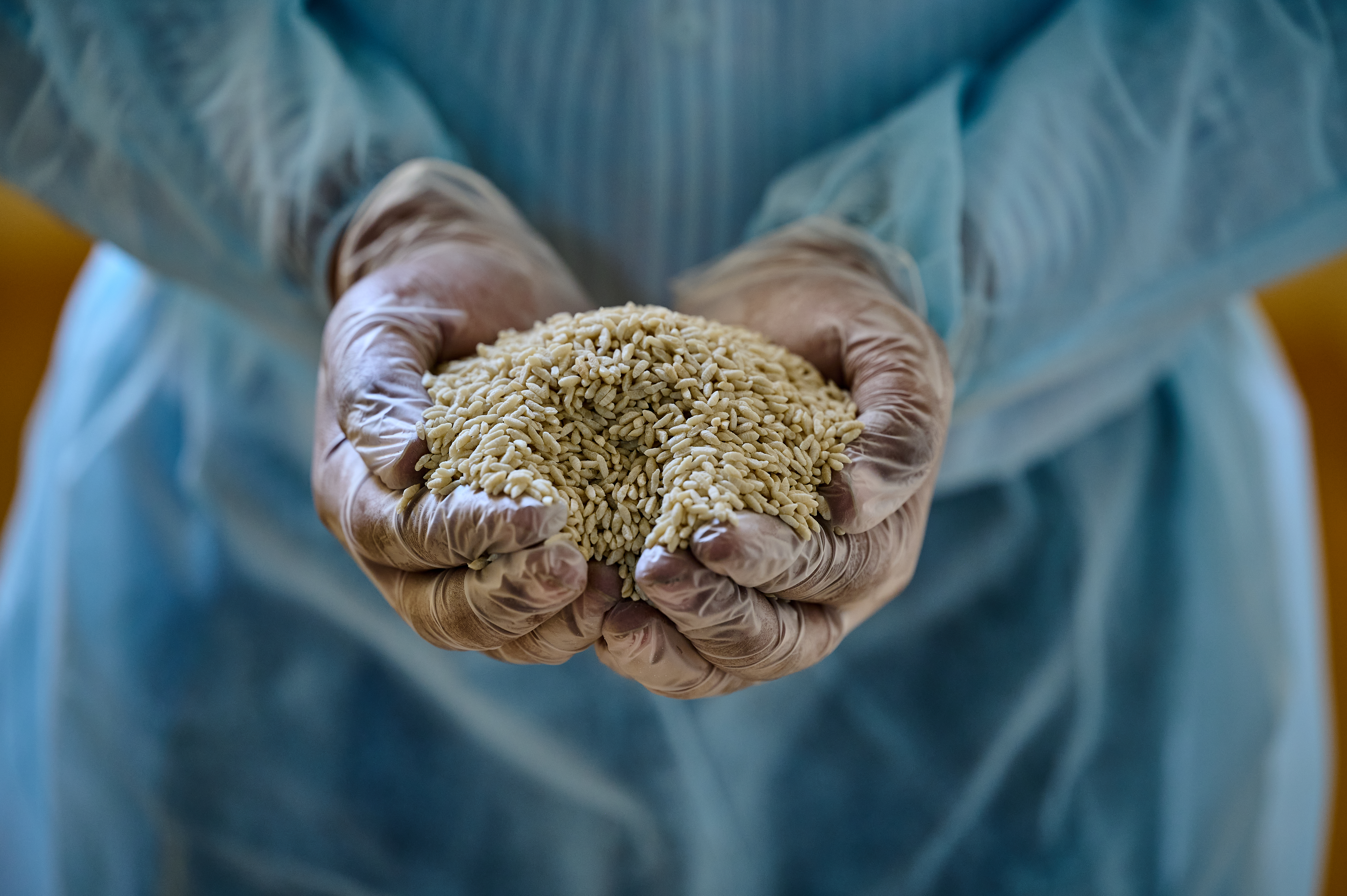
To help ensure people at risk of micronutrient deficiencies are being targeted, Bangladesh is leveraging two of the largest social safety net programs (SSNP) in the country. The Vulnerable Women Benefit Program and the Food Friendly Program are not just distributing rice, but rice that contains essential vitamins and micronutrients. Bangladesh’s National Micronutrient Survey 2019-2020 found that 61% of women surveyed do not meet the minimum requirements of dietary diversity through meals. The survey reported over 40% of women were deficient in zinc, 29% in folate and 14% in iron. Over 31% of children under five also had a deficiency in zinc, 15% in iron and more than 50% had vitamin A deficiency.
To address the deficiencies in the country, rice is being fortified with zinc, iron, folic acid, vitamin A, vitamin B1, and vitamin B12 through a collaboration between the Government of Bangladesh, Nutrition International, and the World Food Programme. “We have to target populations who are more prone to micronutrient deficiencies and reach out to them with fortified food,” says Saiqa Siraj, Nutrition International’s Country Director in Bangladesh. “Rice is a staple in Bangladesh. Everyone eats it and it’s an ideal vehicle to address malnutrition in the most vulnerable populations.”
Below, we visit a distribution point for fortified rice, go inside a manufacturing facility to see how rice kernels receive their fortification glow-up, and we follow the packaged product as it becomes a midday meal.
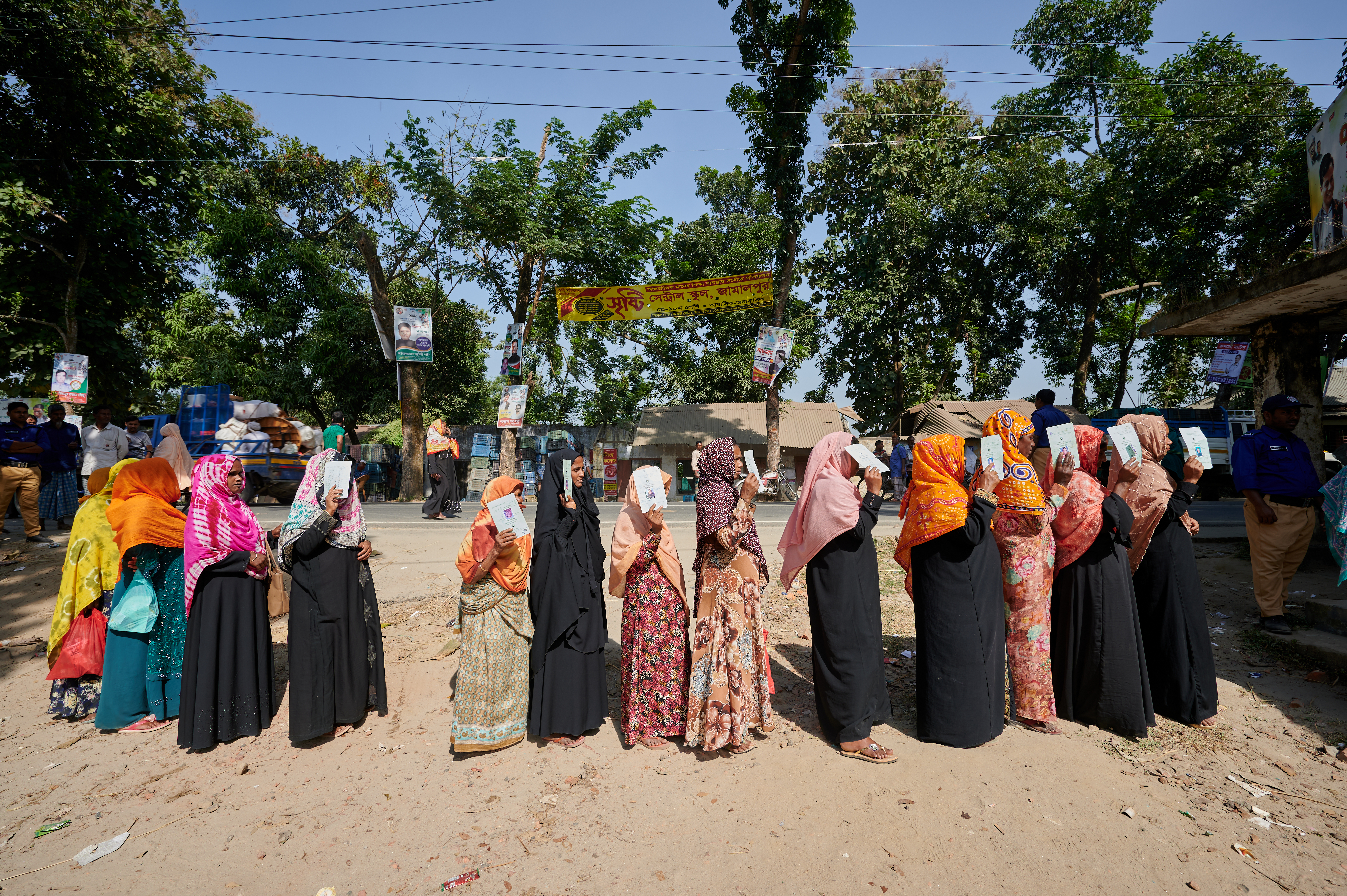
Women line up at a distribution point in Jamalpur District in Bangladesh to collect their packages of fortified rice. Designated members of the population carry an ID card that enables them to pick up rice on a monthly basis, either free of cost or at a reduced rate. Effectively leveraging social safety net programs, which are well established on a wide scale in Bangladesh, is a direct way to connect people with more nutritious food, if that food has been fortified with needed micronutrients.
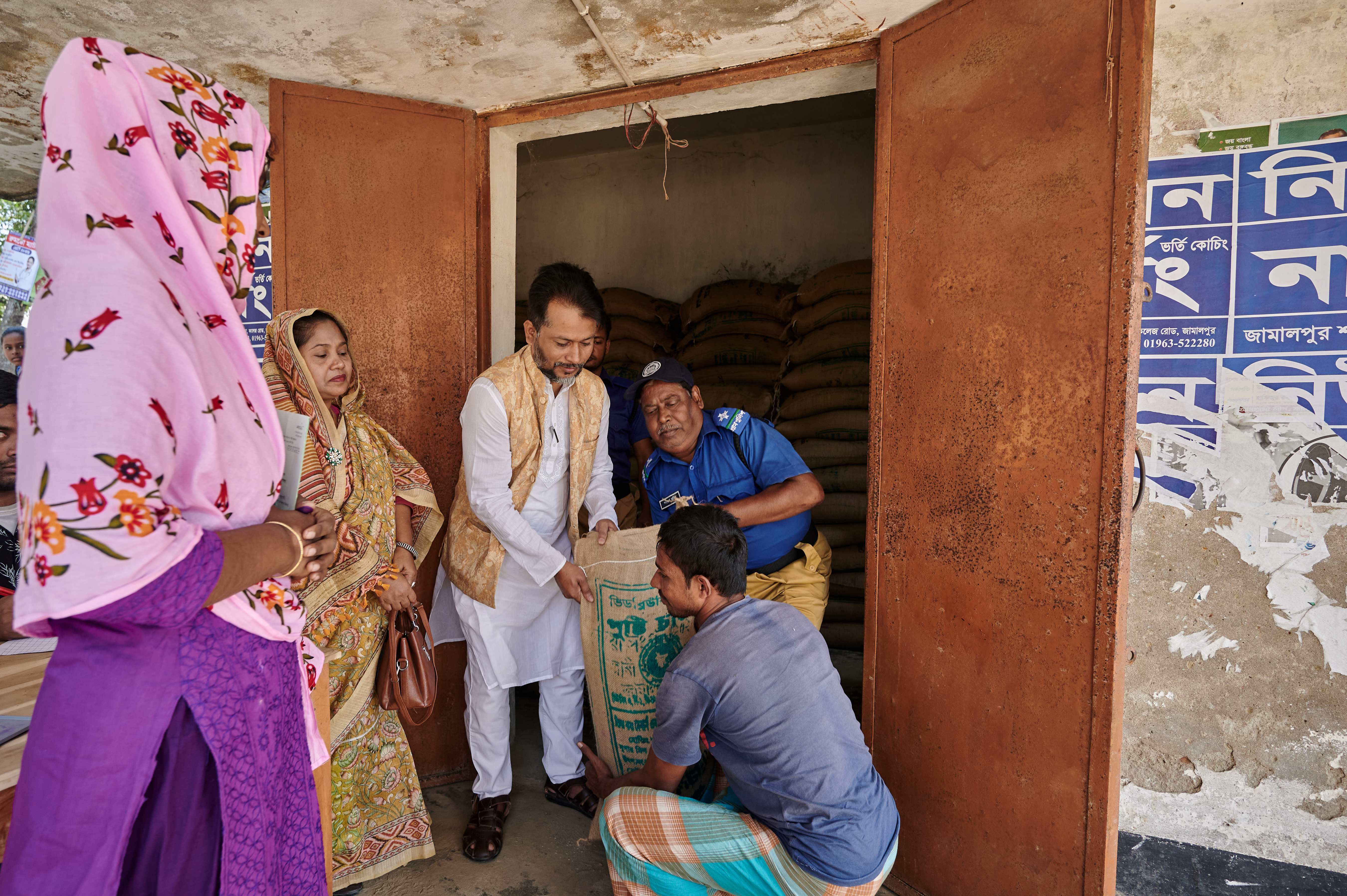
Rupa (far left) is a card holder of the Vulnerable Women Benefit SSNP and is collecting her rice free of cost from the distribution point of Union Parishad. In 2013, the Government of Bangladesh began fortifying its rice. Since 2016, Nutrition International has supported the national and subnational governments with the World Food Programme to help streamline this initiative through targeted technical assistance and advocacy, working closely with the Ministry of Food and Ministry of Women and Children Affairs. When the Government of Bangladesh launched the program, it initially reached 30,000 people. It’s now reaching more than 15 million.
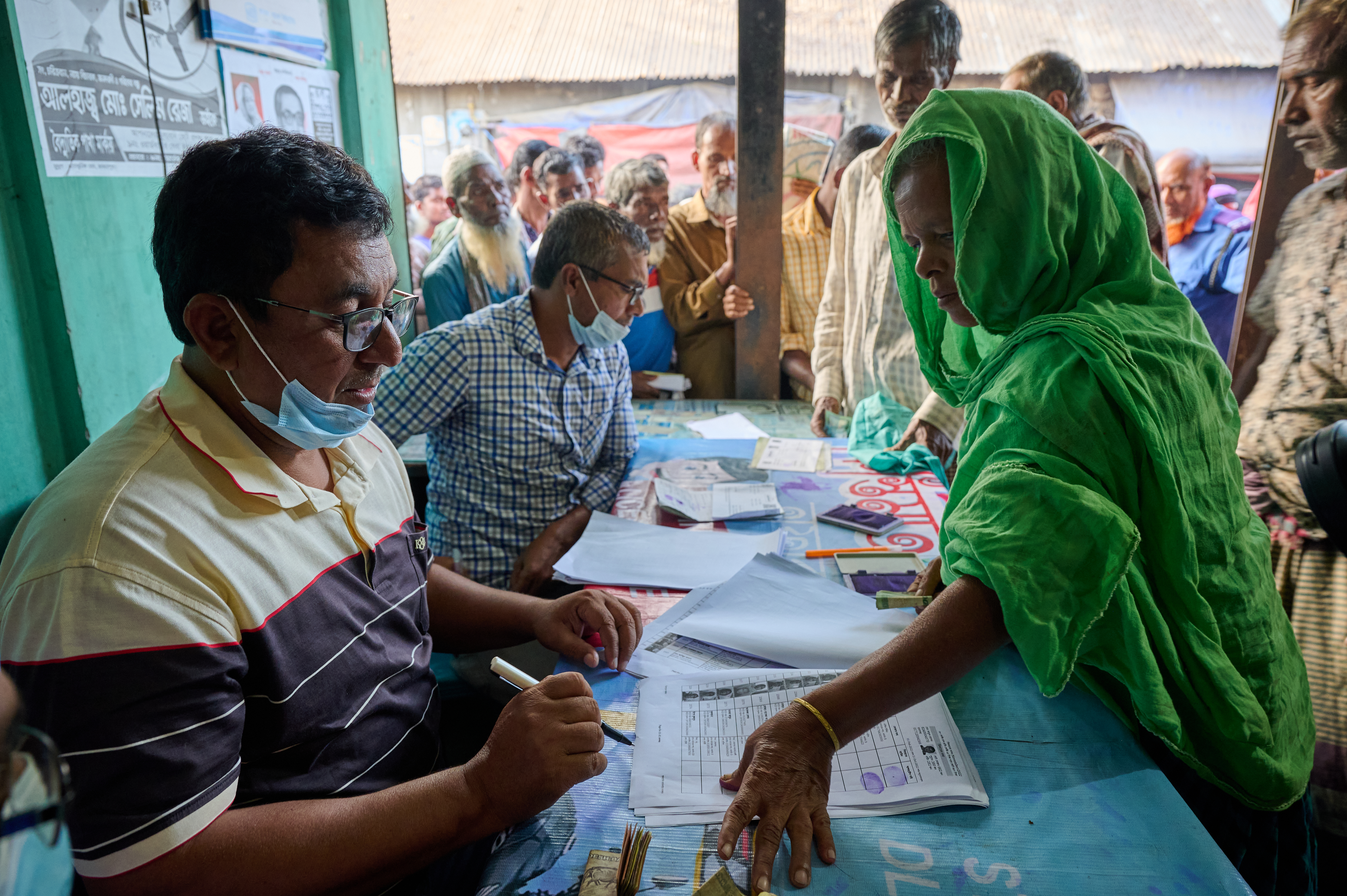
The Food Friendly Program is another public food distribution program offered by the Bangladesh government that provides nutritional support to low-income rural households. The program reaches five million beneficiaries with fortified rice available at subsidized prices during the ‘lean’ season, the time between harvests, each year.
When members of a SSNP pick up their rice, they automatically receive a sack that is fortified. But how exactly does this happen?
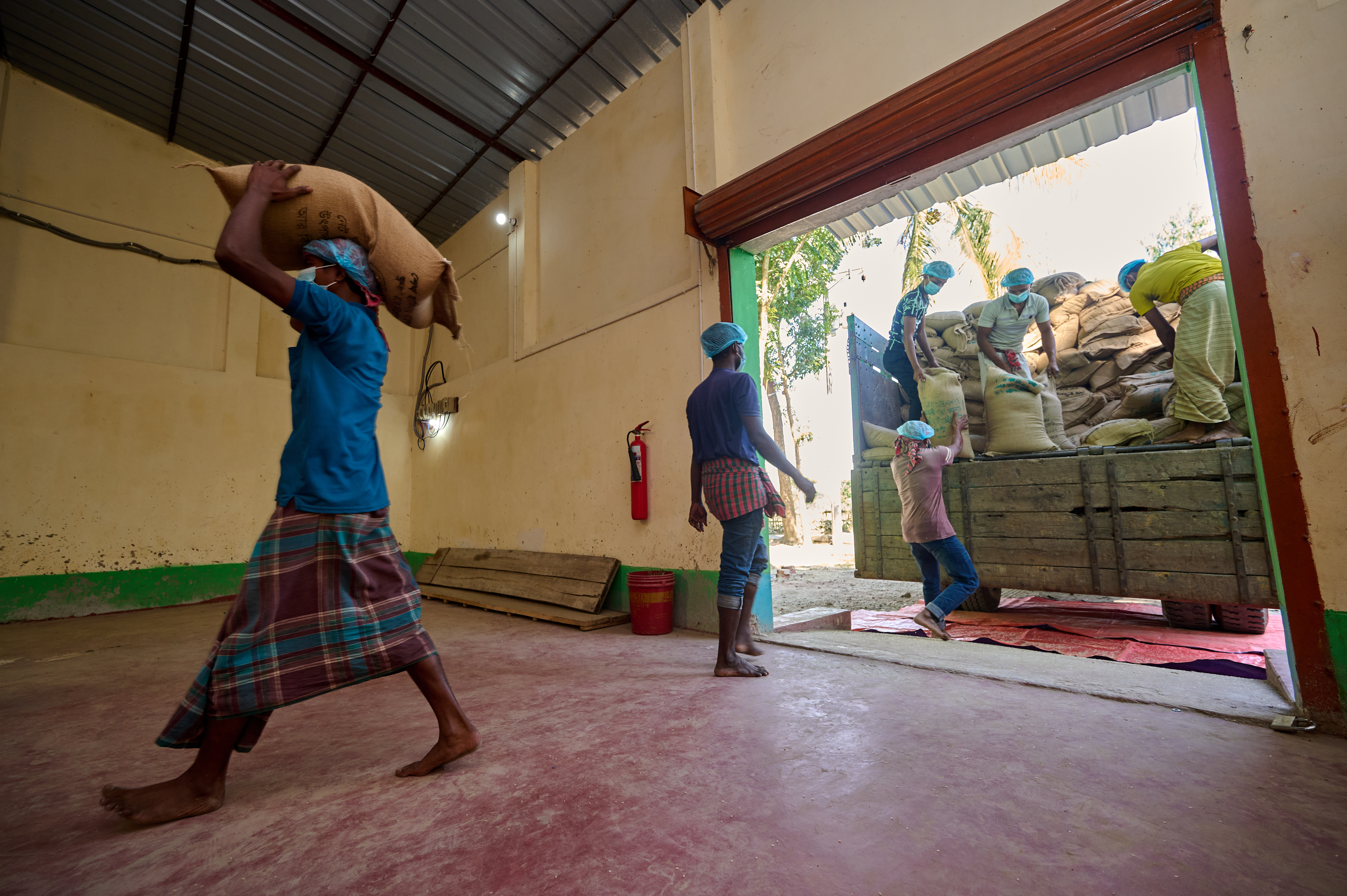
Workers carry sacks of non-fortified rice into a rice fortification blending facility in Jamalpur. This rice will be blended with fortified rice kernels and then repackaged for consumption. There is no difference in taste or cooking methods between fortified and non-fortified rice.
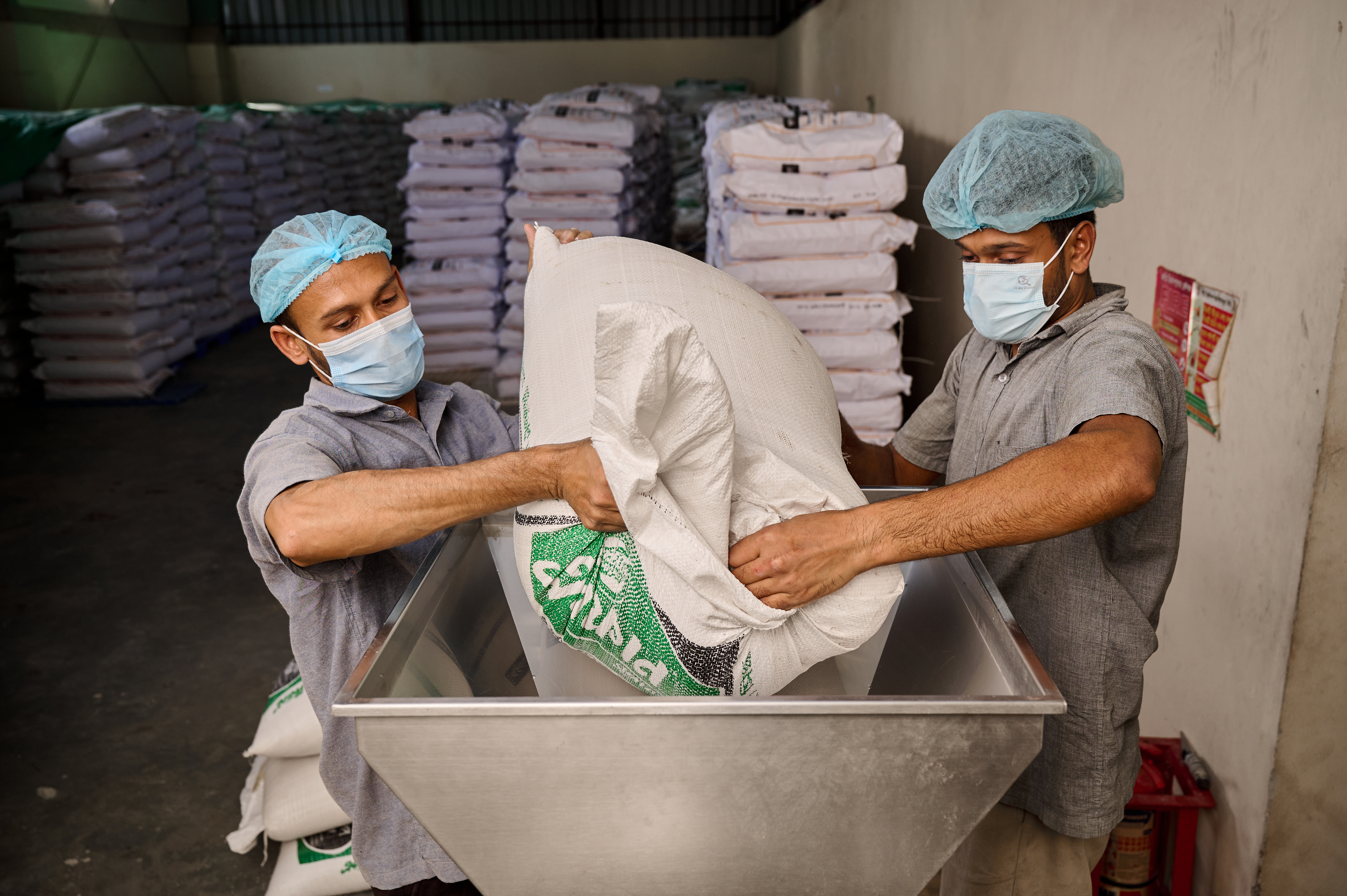
At a separate facility, the fortified rice kernels are developed. Mills send broken pieces of regular rice to this facility. This rice is ground into a powdered form ready to be combined with a mixture of micronutrients known as a ‘premix’. This is what will create the fortified rice kernels.

Above, the vitamin mineral premix is measured out. This premix contains iron, folic acid, zinc, vitamin A, vitamin B1, and vitamin B12. “The main issue is undernutrition and in order to tackle the lack of nutrition, people need to consume food filled with vitamins and micronutrients,” shares Md. Mossabber Hossain Badhon, Senior Project Manager at Nourish Food Ltd, the fortified rice kernel factory pictured. “Our main source of food is rice. We all eat rice. So, through rice fortification, we can tackle undernutrition among beneficiaries, consumers and general citizens. This is why we are fortifying rice with the help of Nutrition International, the World Food Programme and the government.”
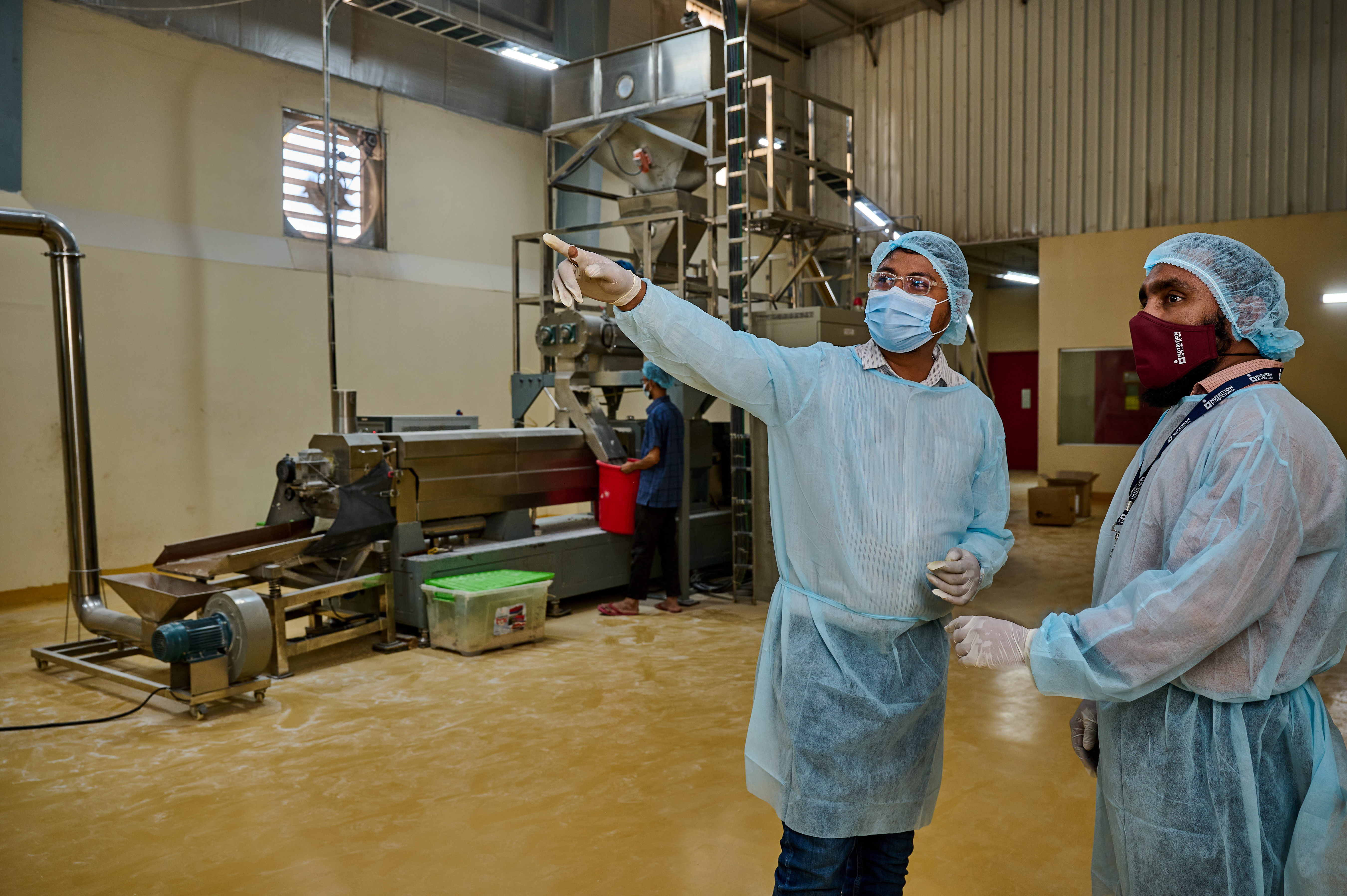
Nutrition International provides technical support to both government and industry to ensure quality fortified foods are provided at scale within the SSNPs. This includes on-the-ground support to factories to work through any challenges as they arise. “Actually, starting anything new can be challenging. But Nutrition International has always been supportive during challenging times,” shares Badhon. “The way Nutrition International provides training and support – finds out the root causes of problems and fixes them – is very beneficial for any business to smoothly run their factories.”
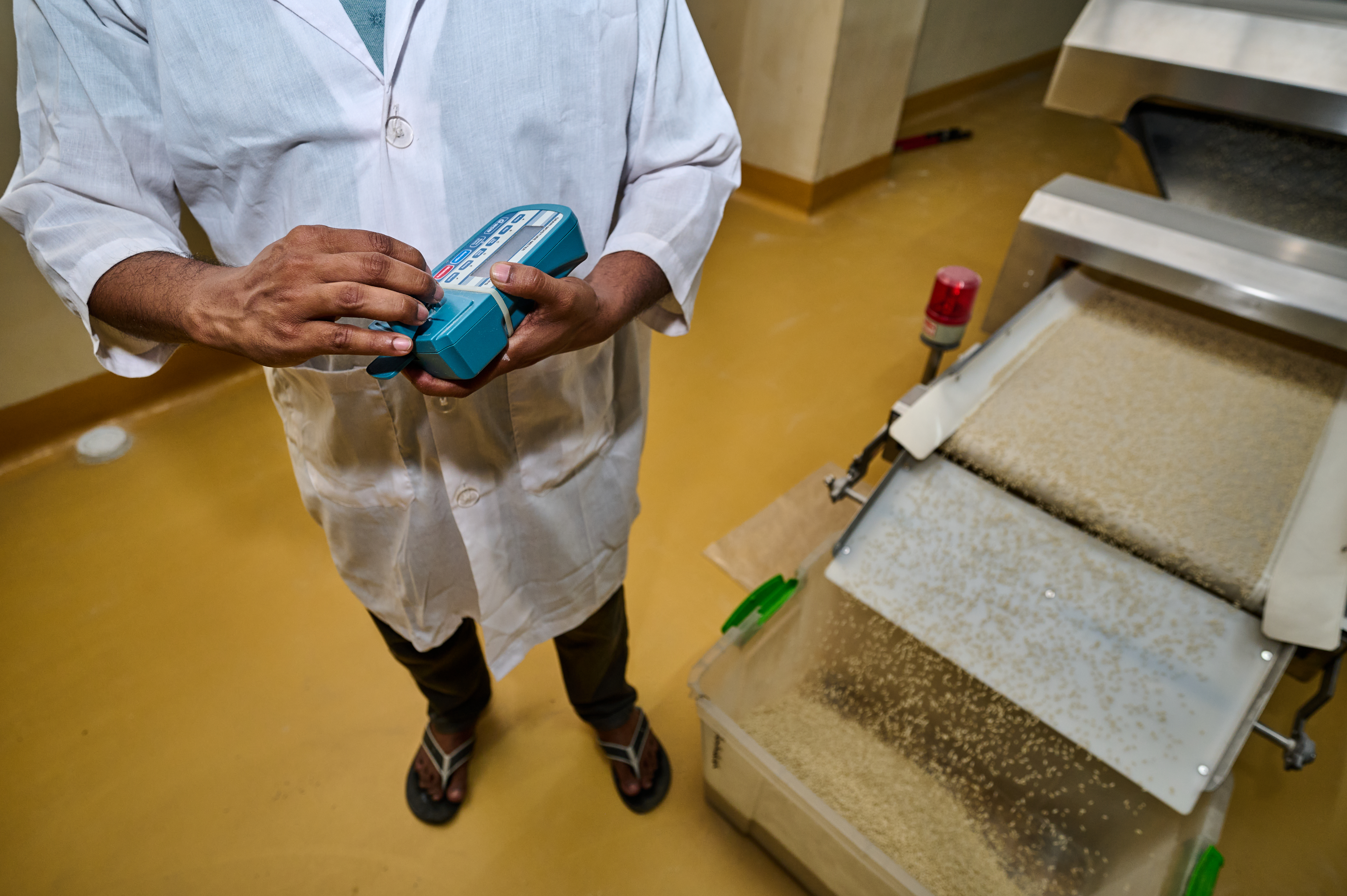
The rice flour is combined with the premix, turned into a dough, and then shaped into rice kernels through a process called extrusion. Quality assurance is critical throughout the process. Above, a worker uses a grain moisture meter to check the fortified kernels have the correct composition. All this is done to ensure the end consumer receives a quality and safe product.
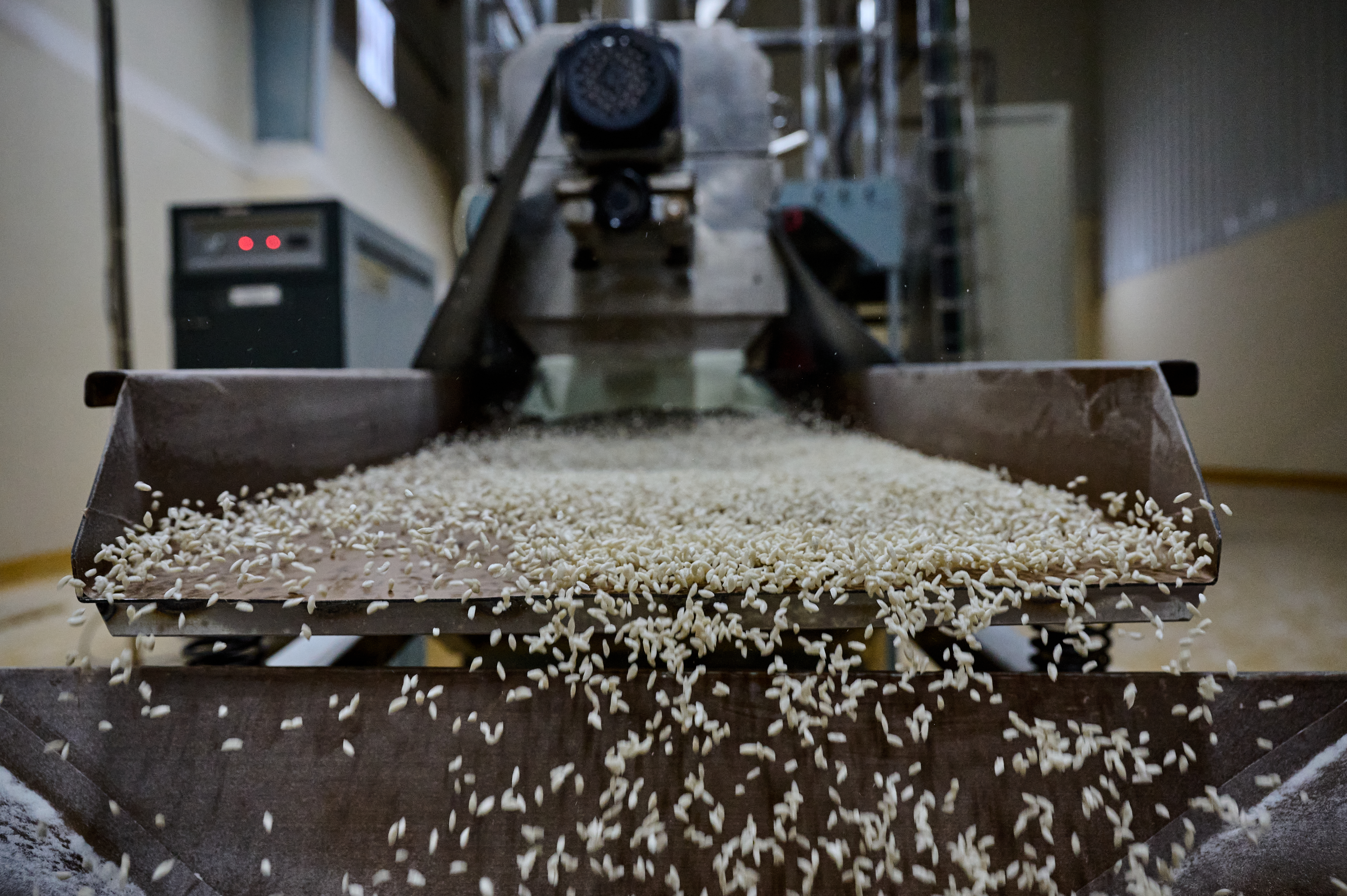
The fortified rice kernels are then cooled, before being quality checked again and packaged to go to a blending facility. “Fortification is important because we have a portion of our population experiencing poverty,” shares Md. Shafi Afzalul Alam, the District Controller of Food in Jamalpur. “That is why rice fortification is necessary for us.”
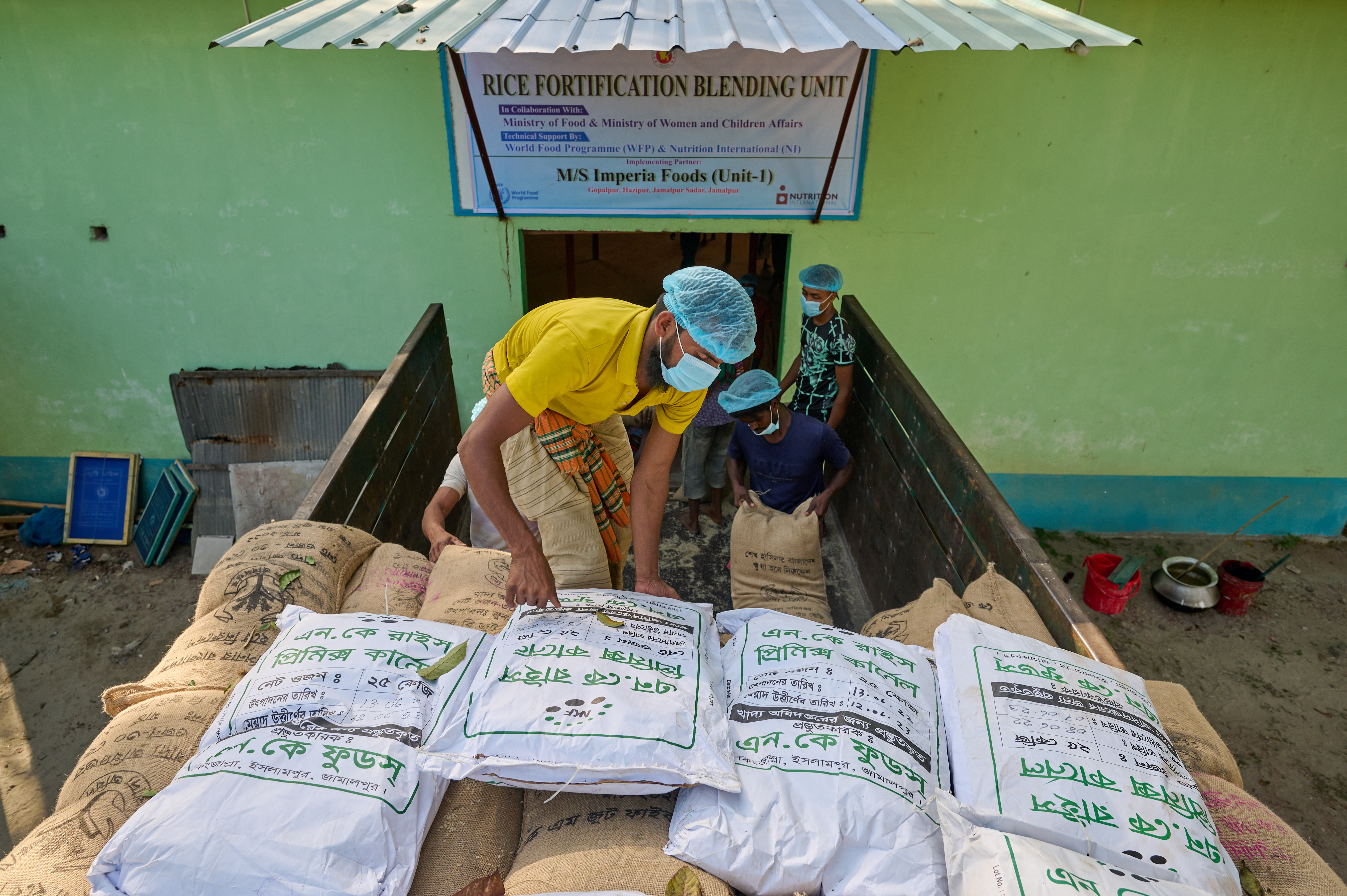
A rice fortification blending facility combines fortified rice kernels with non-fortified rice in the regulated ratio. Here, the rice is arriving to be blended. “Our rice is being mixed with these micronutrients and we are able to deliver this rice to the doorstep of the common women,” shares Kamrunnahar, Deputy Director of the Department of Women’s Affairs, Jamalpur. “In this entire process Nutrition International and the World Food Programme are assisting the Government of Bangladesh.”
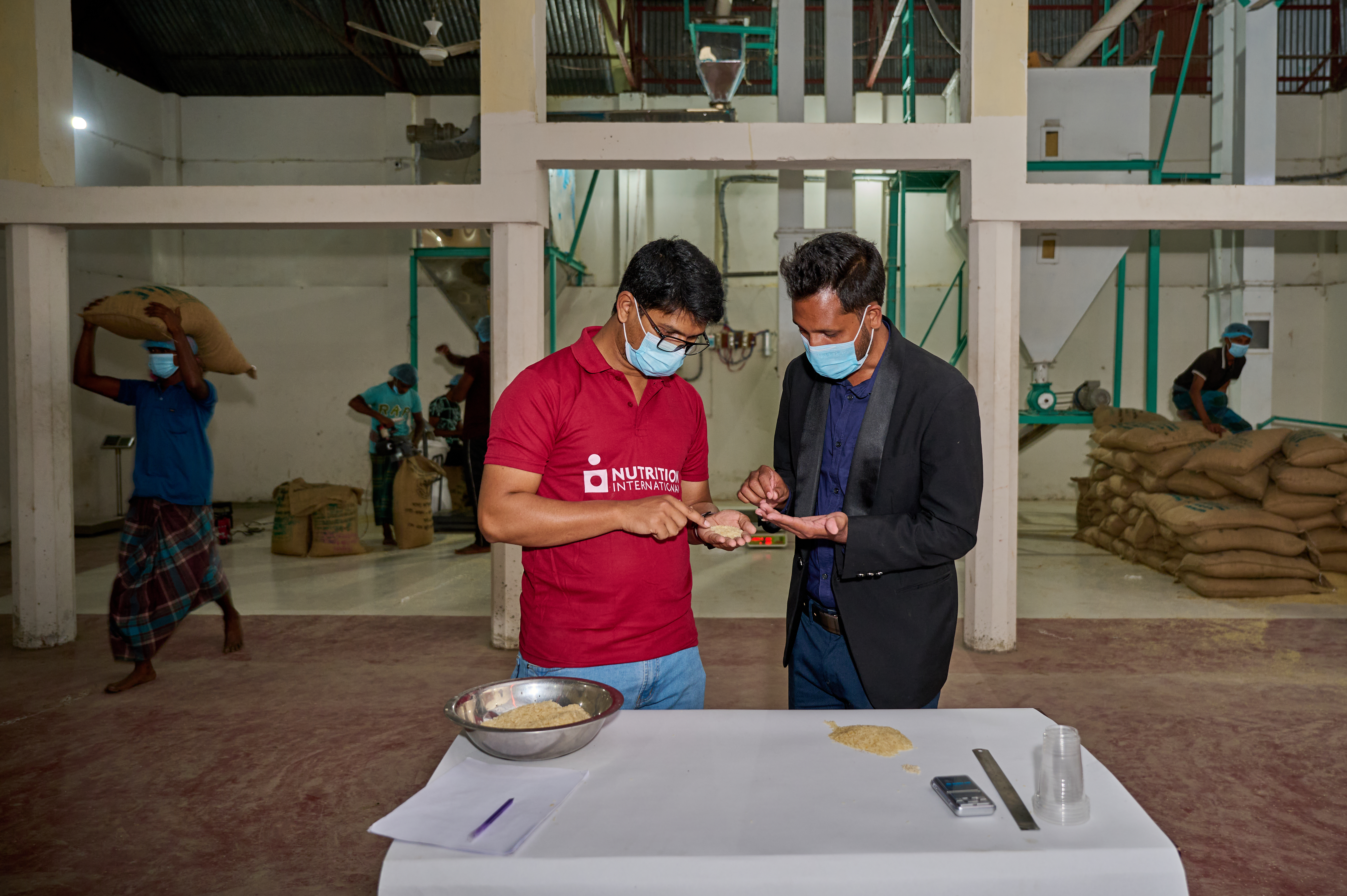
A Nutrition International field coordinator supports with quality assurance checks to ensure the correct mixing ratio and consistency of non-fortified rice and fortified rice kernels at a blending facility. Nutrition International provides on-the-job training, monitoring and supportive supervision during production, maintenance, quality assurance, good manufacturing practices and supply chain management to strengthen the knowledge, skills and capacity of rice millers and managers.
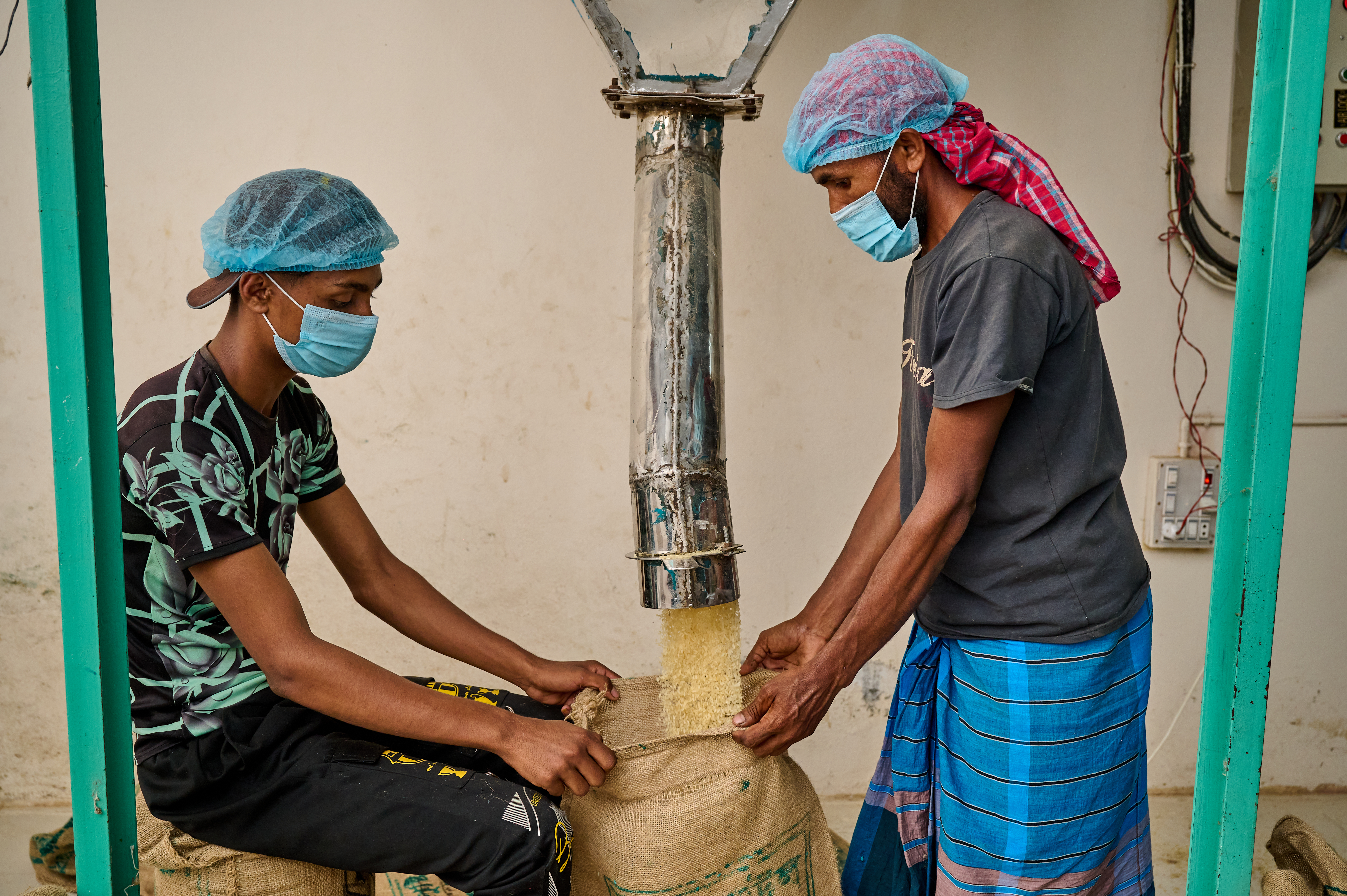
Once appropriately blended, the fortified rice is repackaged and sent to its distribution point. Nutrition International supports the Ministry of Food and Ministry of Women and Children Affairs in the integration of fortified rice into social safety net programs to ensure people in resource-limited scenarios are still getting the micronutrients they need. In addition to ground-support, Nutrition International is also leading advocacy work at the district and national levels to streamline distribution and increase access and uptake.
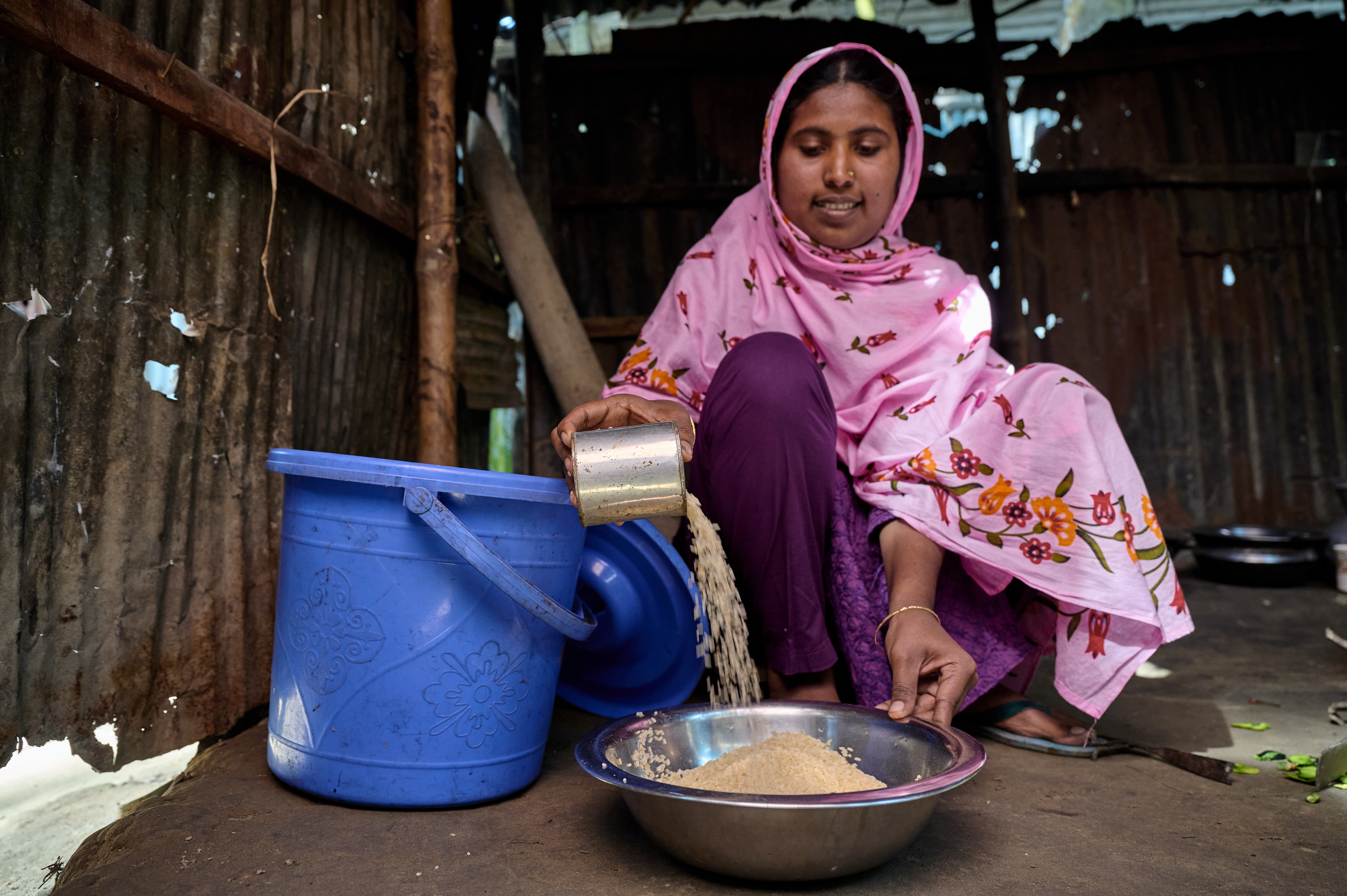
Rupa portions out a segment of rice for cooking her family’s midday meal. She lives with her husband, mother-in-law, son and two sisters-in-law. “It requires the same amount of water as normal rice,” she shares. “Normal rice and fortified rice look the same and taste the same.”
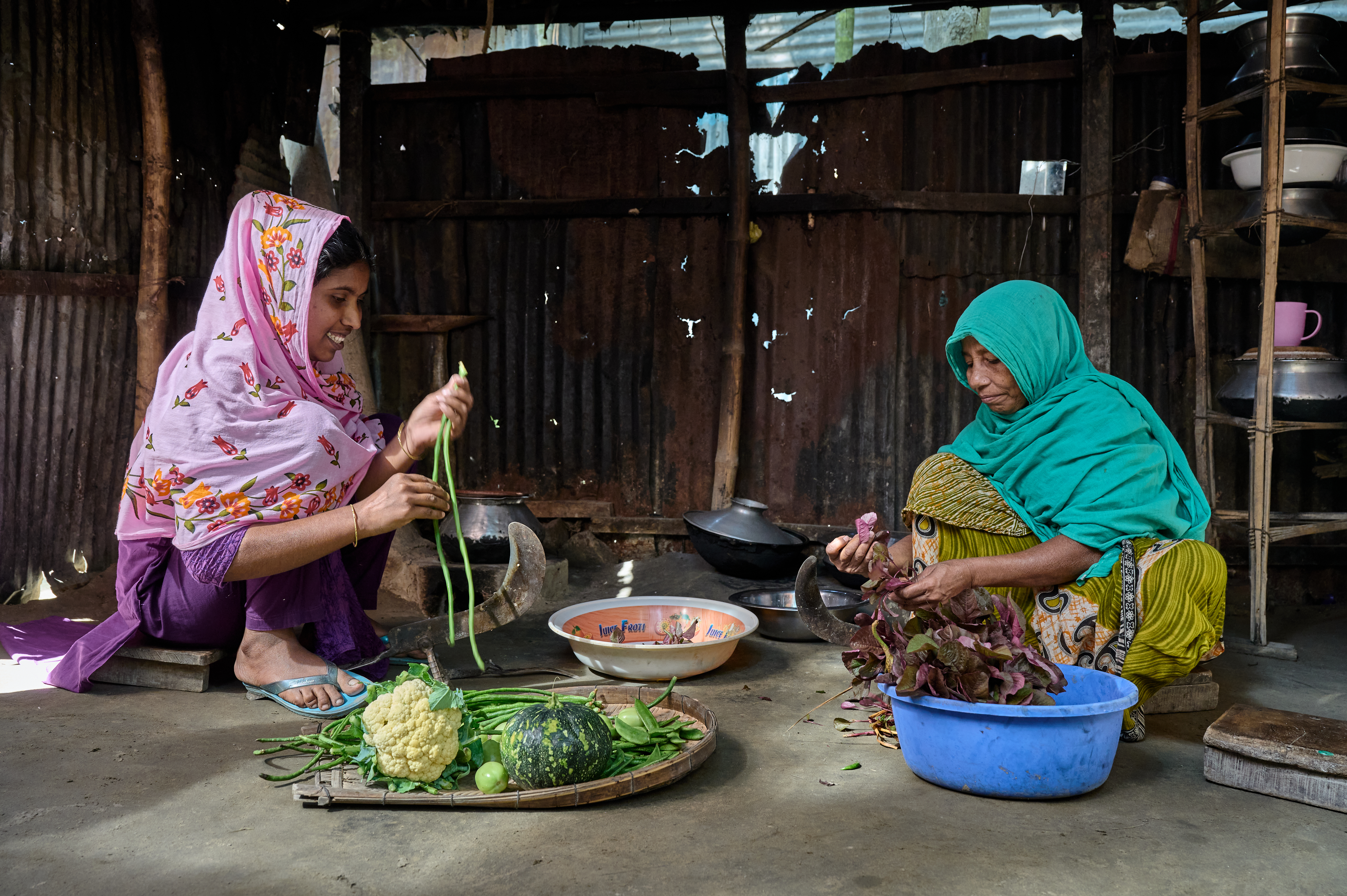
Rupa and her mother-in-law Johora prepare a meal together. Rice is the common base for meals, and they are preparing vegetable curry to accompany it. Both women are part of a SSNP due to their circumstances and are able to access rice for their family. “Night blindness, anaemia, and weak immunity are seen in women due to deficiencies in vitamins A, B1, B12, iron, folic acid, and zinc,” shares Kamrunnahar. “Taking this food helps to address these deficiencies. As a result, we get the assurance of building up a healthy nation.”
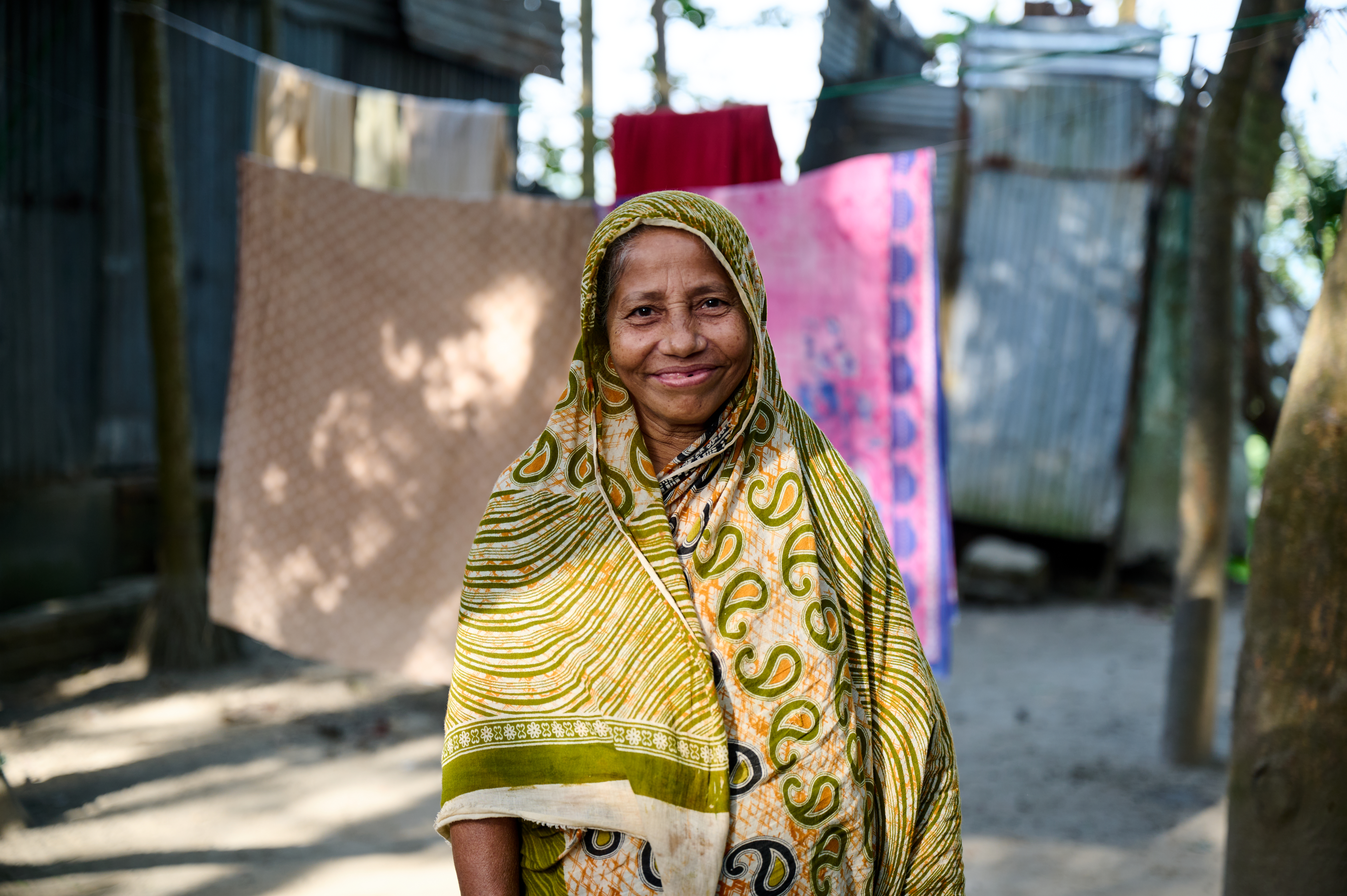
Johora is a strong proponent for fortified rice, and she credits her family’s current health to consistently having fortified rice as part of their diet. “We are receiving the necessary nutrition. We don’t get sick easily anymore,” she shares. When asked if there is a difference between normal rice and fortified rice, Johora is empathic in her response: “It takes as much time to cook fortified rice as the normal one. There is no bad smell to this rice. The quality of this rice is outstanding. Women need this fortified rice.”
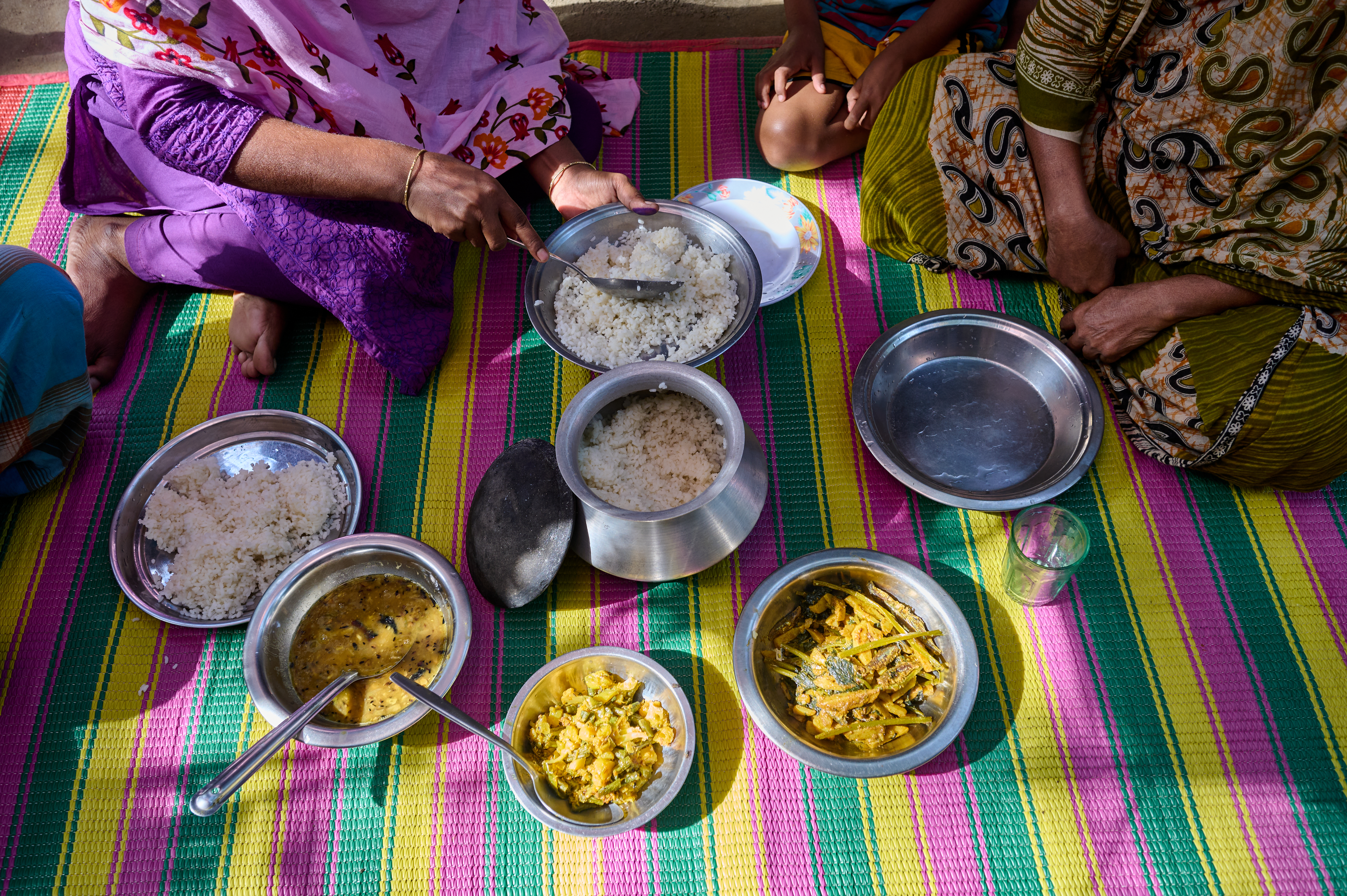
Rupa and her family enjoy a meal of rice with vegetable curry. “I got to know about the benefits of fortified rice from the chairman of Union Parishad,” she shares. “Fortified rice has higher health benefits than normal rice. My family and I, together, eat fortified rice.” Her mother-in-law agrees. “I will recommend this to others so that they can get the nutrients too and stay healthy like us.”
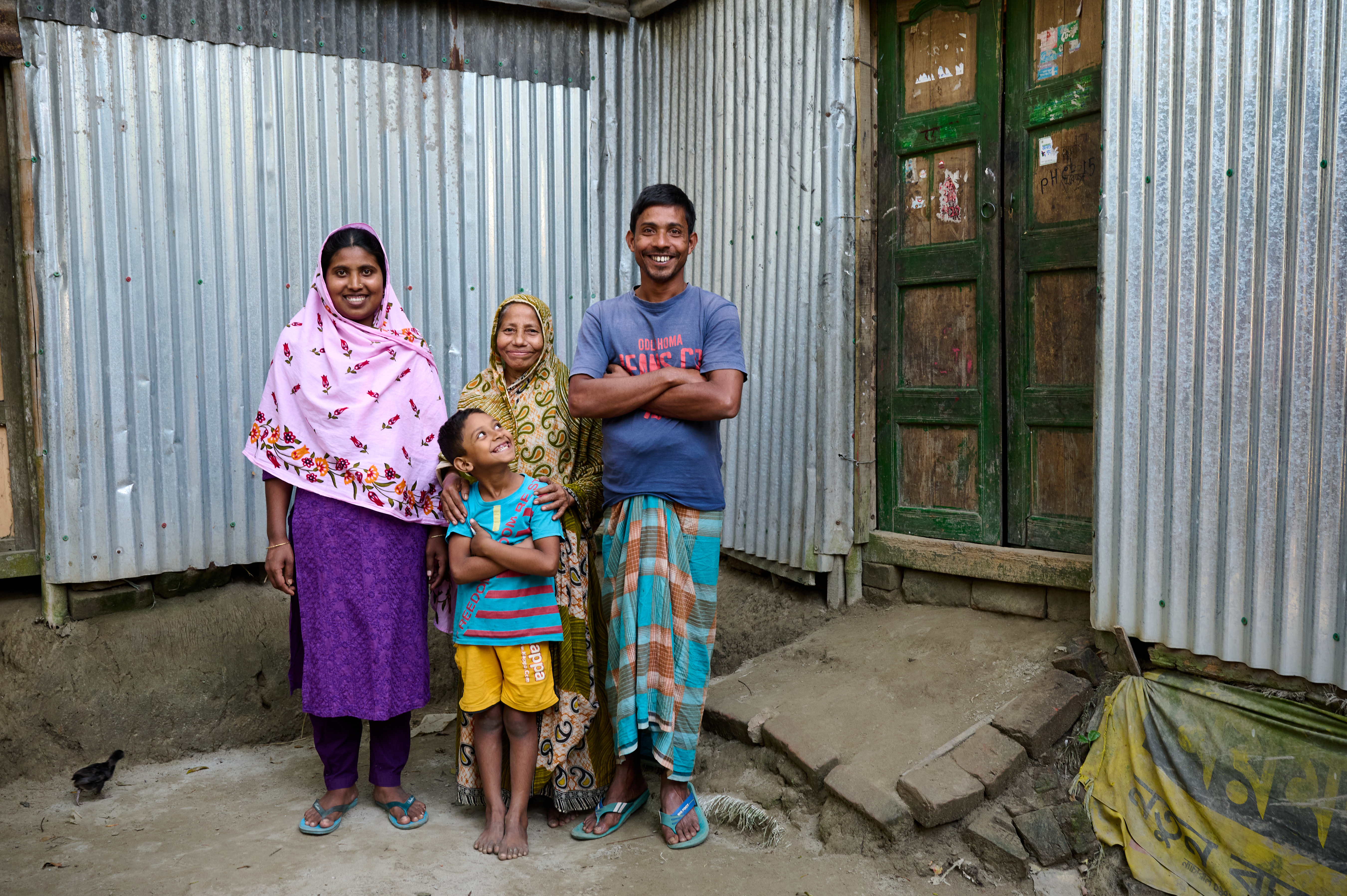
Johora stands between Rupa, Rupa’s husband Johurul and their eight-year-old son. “If we get bedridden, then who will run our family?” Johora asks. “That’s why we need fortified rice. Regular rice doesn’t have many nutrients. As fortified rice contains iron and other nutrients, it is healthy for women. We get many benefits from fortified rice that we don’t get from regular rice. That’s why it is beneficial for everyone.”
When access to a healthy and varied diet is absent, fortifying commonly consumed household staples has the potential to make major improvements in the overall health of individuals, families, and communities.
Food fortification is one part of a package of interventions to address micronutrient deficiencies. Learn more about Nutrition International’s work in Bangladesh and our work in large scale food fortification globally.